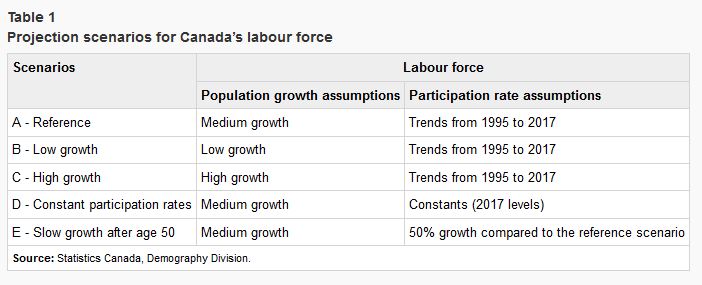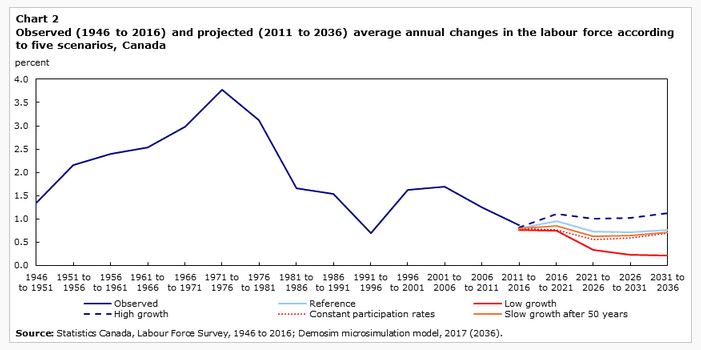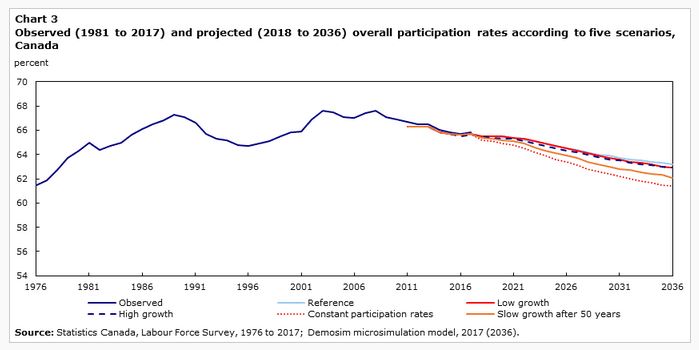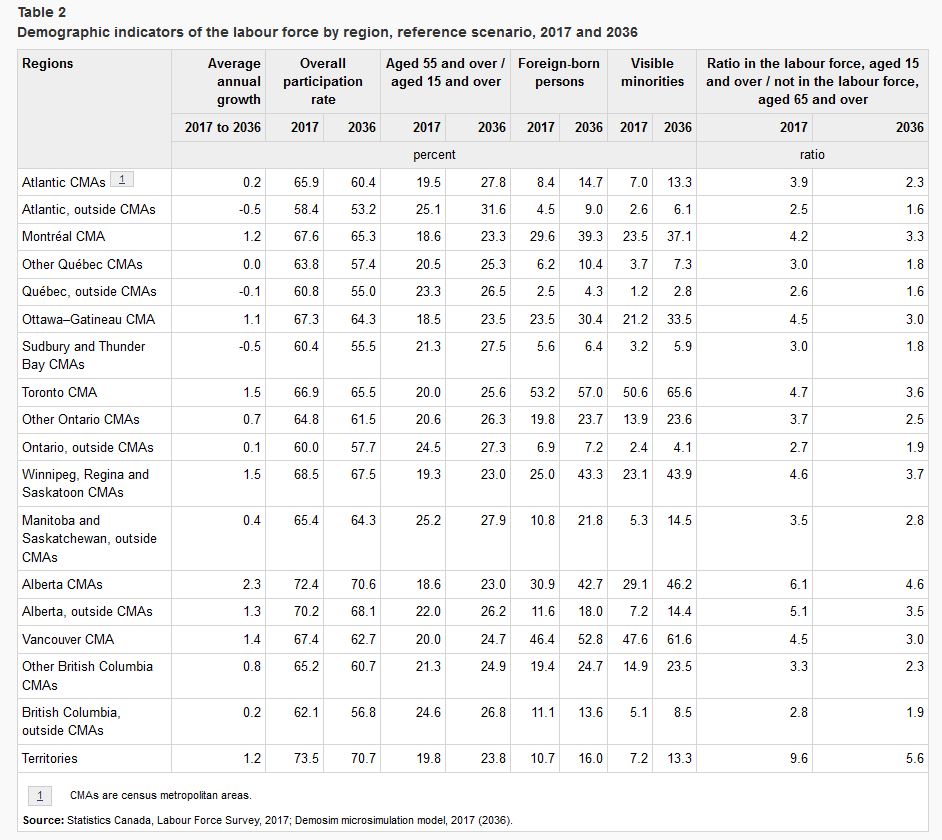The Economics and Statistics Division maintains archives of previous publications for accountability purposes, but makes no updates to keep these documents current with the latest data revisions from Statistics Canada. As a result, information in older documents may not be accurate. Please exercise caution when referring to older documents. For the latest information and historical data, please contact the individual listed to the right.
<--- Return to Archive
For additional information relating to this article, please contact:
March 20, 2019STUDY: THE LABOUR FORCE IN CANADA AND ITS REGIONS: PROJECTIONS TO 2036 Statistics Canada has released a study looking at labour force projections to 2036. The data is based on Statistics Canada Demosim microsimulation projection model which can take into account various population characteristics for census metropolitan area (CMAs) and non-CMA areas. The study is not a forecast of the future, but analyzes projected national trends of size, growth, demographic weight, age structure and ethnocultural composition of the labour force.
From 1960 to 2010, the Canadian labour force grew faster than the population aged 15 and over due to the arrival of baby-boom generation (born 1946-1965) into the labour force, the increase in women’s' labour force participation, and rising education levels. In recent years, participation rates have declined. The Canadian participation rate declined form 68 percent in 2008 to 66 per cent in 2017. Nova Scotia's participation rate declined from 64 per cent to 62 per cent over the past ten years. The decline in labour market participation has occurred even as participation among people aged 50 and over has increased. In Canada the participation rate for those aged 60 to 64 rose from 43 per cent in 1996 to 61 per cent in 2017. The population aging, particularly the large cohort of people born during the baby boom era, will continue to put downward pressure on the overall labour force participation rate with the last generation of baby boomers reaching age 65 in 2031.
Table 1 shows the assumptions used for the five different labour force projections scenarios. The first three scenarios (A,B,C) vary the population assumptions and the other two scenarios (D,E) vary the participation rate assumption used.

All scenarios indicate that Canadian labour force should increase out to 2036 with an increase from current 19.7 million to between 21.1 million in the low-growth scenario to 24.2 million in the high growth scenario. The growth rate of the labour force will slow in four of the five scenarios with only the high growth scenario (annual immigration rate increases to 1% of Canada's population by 2022) resulting in a continuation of growth rates at current levels. The low growth scenario (0.5% immigration rate by 2022) would generate near zero labour force growth.

Participation rates are projected to decrease in all five scenarios – falling from around 66 per cent to between 61 and 63 per cent by 2036. All the population scenarios (reference, high and low growth) show similar participation rate projections with changes in the population growth components (fertility, mortality, migration) not having a significant impact on participation rates. If participation rate trends don't continue to the same extent as the past for people age 50 (scenario E) or remain constant at current levels (scenario D), there is more significant decline in the overall participation rate. Participation rate by age developments may prevent a rapid decline in the overall labour force participation rate, but the effect is not expected to be strong enough to compensate for aging of the labour force.

In the 1980s there were six people in the labour force for every person aged 65 and over, and by 2017 this ratio had declined to four people and will see a further decline to 3 to 1 in 2036 under all projection scenarios. Under the reference scenario the proportion of the labour force that will be persons born outside Canada will increase from 26 per cent in 2016 to 34 per cent in 2036. The proportion of the labour force that will be comprised of persons over 55 and members of visible minority groups will rise over the next twenty years.
The labour force projection differ based on regions. Under the reference scenario, the Atlantic CMAs (Halifax, St. John's, Saint John, and Moncton) will have annual labour force growth of 0.2 per cent for the 2017 to 2036 period while the non-CMA Atlantic region will see an average annual 0.5 per cent decline in the size of the labour force. The participation rate in 2036 for the non-CMA Atlantic region (53.2%) will be the lowest among all regions. The Atlantic CMAs participation rate is projected to decline from 65.9 per cent to 60.4 per cent by 2036. The participation rate declines are expected to be more pronounced in eastern Canada than western Canada. Within the Atlantic region there will be increase in the proportion of the labour force that is over 55 years, foreign-born, and members of visible minority groups in 2036 compared to 2017.

Statistics Canada: The labour force in Canada and its regions: Projections to 2036
<--- Return to Archive